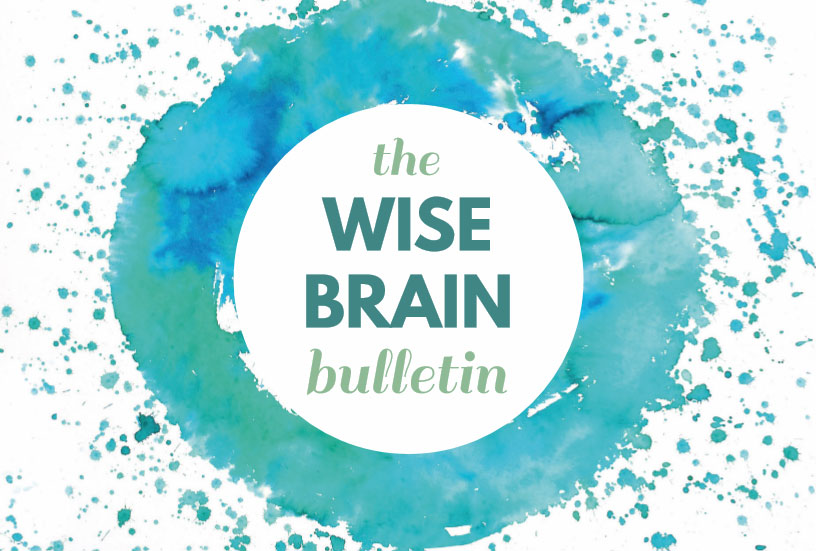News and Tools for Happiness, Love, and Wisdom
Volume 16.3 • June 2022
In This Issue
Uncertainty: Friend, Foe or a Door to New Possibilities?
© 2022 Anat Baniel
The sense of predictability in the daily flow of our lives is essential to our ability to function. When walking down the street, as we place one foot in front of the other on the sidewalk, we expect there to be a solid ground. When having a conversation with a beloved friend, we inherently assume the ongoing exchange will be friendly and safe. Our brains are molded by the connections and patterns that are created in response to our experiences. In turn, we apply these patterns with the built-in, implicit expectation that the world is going to be and remain the way we already know it.
In other words, we prefer to experience the world as predictable and certain. But since the start of the pandemic, for the first time in many people’s lives, certainty has been in short supply. So how do we handle this? In this article, we’ll explore why many of us find uncertainty so challenging and learn how it can actually be a pathway to newfound freedom and potency.
Early on, while in grad school studying to become a psychotherapist, uncertainty was not a topic I associated with my main interest. That changed when I studied with Amos Tversky and later became his teaching assistant in a course titled Statistics for Psychologists. I had the enormous good fortune to listen to him talk about the discoveries he and Daniel Kahneman were making at the time in the area of decision making under uncertainty. This became a new field of study and research for which they eventually received a Nobel Prize in Economic Sciences. The study of unpredictability and uncertainty of outcomes as a central component of human learning, development, and behavior, has also become an integral part of my own work.
Certainty gives us a sense of safety. It makes our lives easier, and also facilitates how we function in groups and as a society. In order to help small children feel safe, we create routines and lots of predictability. Many parents have experienced the horror of the loss of their child’s favorite blanket. Even though as adults we are unlikely to become inconsolable if we lose a favorite blanket, this example shows how the experience of certainty is central to our feelings of safety and well-being, and for our ability to function effectively. Does that mean that when things become unpredictable, we have no choice but to become debilitated? The answer is “no.” In fact, it’s even possible to thrive under uncertainty.
In 2020, as we became aware of Covid-19, very few among us were able to foresee the horrific pandemic that was on the horizon. Those who did foresee the possible future path of Covid-19 were mainly those whose life’s work is in the field of public health, epidemiology, and pandemics. For others, the predictions with pictures of a very different world were too foreign to be fully comprehended and therefore were either ignored, rejected, or viewed as fearmongering which in turn led to opposition and polarization.
Greetings
The Wise Brain Bulletin offers skillful means from brain science and contemplative practice – to nurture your brain for the benefit of yourself and everyone you touch.
The Bulletin is offered freely, and you are welcome to share it with others. Past issues are posted at http://www.wisebrain.org/tools/wise-brain-bulletin.
Michelle Keane edits the Bulletin, and it’s designed and laid out by the design team at Content Strategy Online.
To subscribe, go to http://www.wisebrain.org/tools/wise-brain-bulletin.
As 2020 neared its end, there was a lot of talk of, and an expectation that, the end of the year (which, by the way, is an arbitrary notion created by humans) would be the end of the pandemic. Many expected that things would “go back to normal” or “go back to the way they were.” But they didn’t. By the end of the following year, there was very little talk about things going back to the way they were (even though many, understandably, still wished for it). By now, we have all woken up to the reality of uncertainty. Yet, many of us are still struggling to find ways to live well with such blatant, ongoing unpredictability.
Is Uncertainty a Bad Thing?
To think and believe that uncertainty is a bad thing is like thinking and believing that gravitational force is a bad thing. Yes, gravitational force pulls on us all the time but we need it in order to move and function. Our lives are built around the existence of this force (consider the amount of physical and mental training and preparation it takes before an astronaut is sent to outer space for an extended period of time).
The same is true for uncertainty. It’s always there whether we are aware of it or not. Uncertainty provides a door for new possibilities - it is what makes learning possible. For example, there are an estimated 7000 languages in the world. A newborn child can learn any one of those 7000 possibilities depending on the language/s they hear. There are also infinite ways to think, feel, compose music, and react to any situation we find ourselves in. If all was certain, choice and freedom, an integral part of the human condition, would not exist.
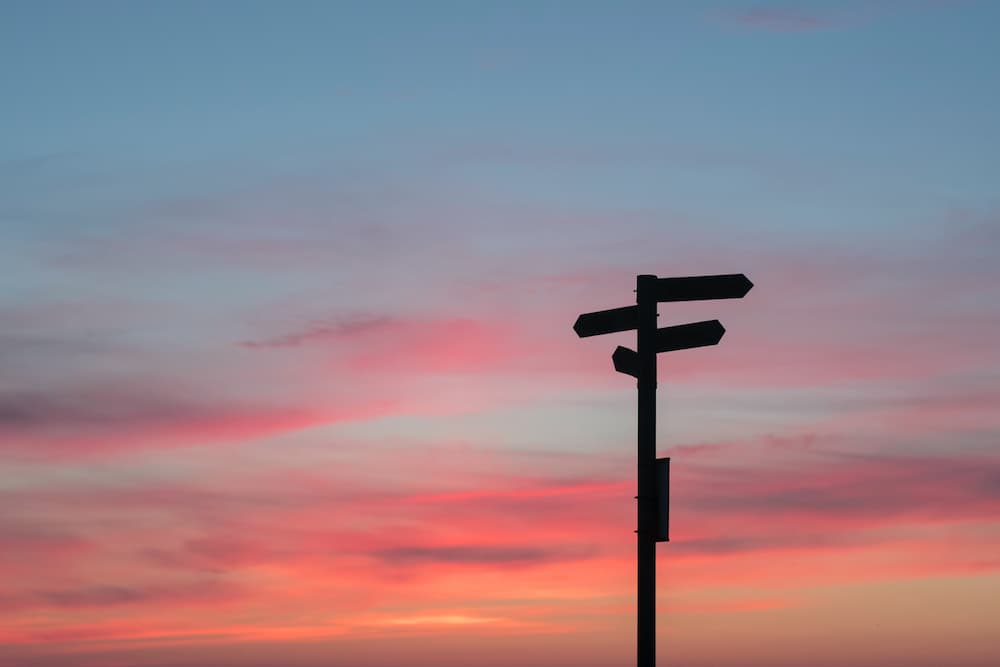
Habits Versus Change
So why do we have such a hard time with uncertainty? The answer lies with how we currently use and have used our brains in the past. When our experiences are generally the same with little variability and if we tend to stay the course and not seek and allow variations and novelty in our lives, our habitual beliefs, and ways of moving, thinking, feeling, and acting, get deeply grooved into our brains. We live under the illusion of certainty and when the proverbial rug is pulled from under our feet, we lack the freedom to respond with the agility and creativity that is needed to avoid “falling” and/or to recover quickly if/when we do fall.

Two Brains in One
Our brains serve two main purposes:
1: to form reliable, deeply grooved patterns that allow for automatic or semi-automatic responses to stimuli and situations, and to serve us in our daily lives by creating enough certainty and safety for ourselves and others. 2: to be alert, agile, uncommitted, and “at the ready” to create new connections and patterns so that we can continue to learn, to change, to bring awareness to our current reality, and to meet our needs better.
You may be wondering how such seemingly opposite core purposes can co-exist in the brain. From my experience in working with tens of thousands of people over many years, I came to realize that not only is it possible to change, even when we have deeply ingrained habits, but that our brains are actually designed to change, at any age. Healthy brains are at the ready to wake up to learn, change, and improve our functioning. Our brains just need the right conditions to provide them with the information necessary to create something new.
Why Are So Many of Us Challenged by Uncertainty?

Extreme uncertainty is very difficult to deal with emotionally, cognitively, and at times even physically. Researcher Jerome Kagan of the UNC School of Education wrote that the need to resolve uncertainty is among the four primary motives driving human behavior. This need is so powerful that Amos Tversky and Daniel Kahneman were able to identify and reliably predict the typical mistakes in thinking and in decision-making that people will make when faced with uncertainty. (The paradox of identifying predictability in how we deal with uncertainty is an interesting one!) If you would like to dive deeper into their thinking, you can read a seminal paper they have written. And if you wish to read the story of their friendship and how they developed their work, I recommend the informative and fascinating book by Michael Lewis called The Undoing Project.
The process of education in schools, in the home, and in social circumstances leans heavily towards children and adults developing highly reliable and predictable, deeply grooved patterns of behavior, thinking, and belief. Very little attention, if any, is put into developing in parallel the brain’s inclination to readily wake up and create something new. With such imbalance between these two qualities and skills of our brains, uncertainty can stump us, stress us greatly, and leave us feeling anxious, perhaps angry, and helpless. The 2+ year pandemic has certainly created extreme conditions that have, and continue to, challenge us on many levels.
A few basic things about the brain:
- The brain has a job to do like any system in our body, such as the heart and liver.
- The better the brain can do its job, the more we can successfully learn and overcome challenges.
- The job of the brain is to put order in disorder and to make sense out of nonsense.
- The brain is an information system rather than a mechanical system, and it’s governed by informational system principles. For example, when we try moving a heavy object, using more force typically leads to a better outcome (mechanical system). However, if we use force to get the brain to learn something new, this is likely to distort the learning process and create unnecessary limitations in the brain.
- For learning to occur the brain needs new information.
- The source of new information is the perception of differences in the flow of stimulation coming from the outside and inside. This is what is referred to in neuroscience as “signal to noise ratio.”
- When a difference in the flow of stimulation is not perceived, it does not exist, and the brain lacks information with which to learn.
- The chain of learning is: stimulation (perception of a difference) to evoking differentiation, creating new connections in the brain, providing the opportunity and possibility for spontaneous integration, (i.e. learning).

Freedom and Potency
The good news is that there are easy, direct, and simple ways to “wake up” the brain and turn its Learning Switch on (the Learning Switch is one of 9 NeuroMovement® Essentials that I have developed and that offer concrete, effective, and immediate ways to easily tap into your brain’s enormous potential). When we wake up the brain to create new pathways and solutions to match our current reality, we experience increased safety and well-being with our newfound freedom and potency.
3 Essentials to Help Calm Anxiety During Uncertainty
I encourage you to familiarize yourself with the following 3 Essentials and look to apply them in as many aspects of your day-to-day activities as you can. In addition, I invite you to do this NeuroMovement® lesson 1-2 times a day (it’s only 10 minutes long), every day for 7 days or more.

Variation
Introduce variation and playfulness into everything you do. Your brain will get a cascade of information it can use to create new possibilities in movements, thoughts, and actions. One of the easiest ways to bring in variations is by doing something the “wrong” way on purpose, or making intentional, yet safe mistakes. Over time, as you experience how powerful intentional variations are, you will grow to love and enjoy taking these careful and measured “risks” in your life. It’s helpful to bring in an element of playfulness by acknowledging that you have survived thus far, and you will continue to make it into the future.
Flexible Goals
When uncertainty is great, it is perfectly fine to set goals; just know that your goals might need to adapt as the situation changes. Try to embrace all the unexpected steps, missteps, and re-routes along the way. These are a rich source of valuable information for your brain and a great opportunity for you to feel good about yourself.
The Learning Switch
When the world as we know it keeps changing, becoming a highly potent learner is key to success and well-being. For the brain to properly do its job, the learning switch needs to be turned ON. Expect and look to learn something new in each situation you find yourself in, especially in the very familiar ones, by bringing curiosity to the situation or experience.
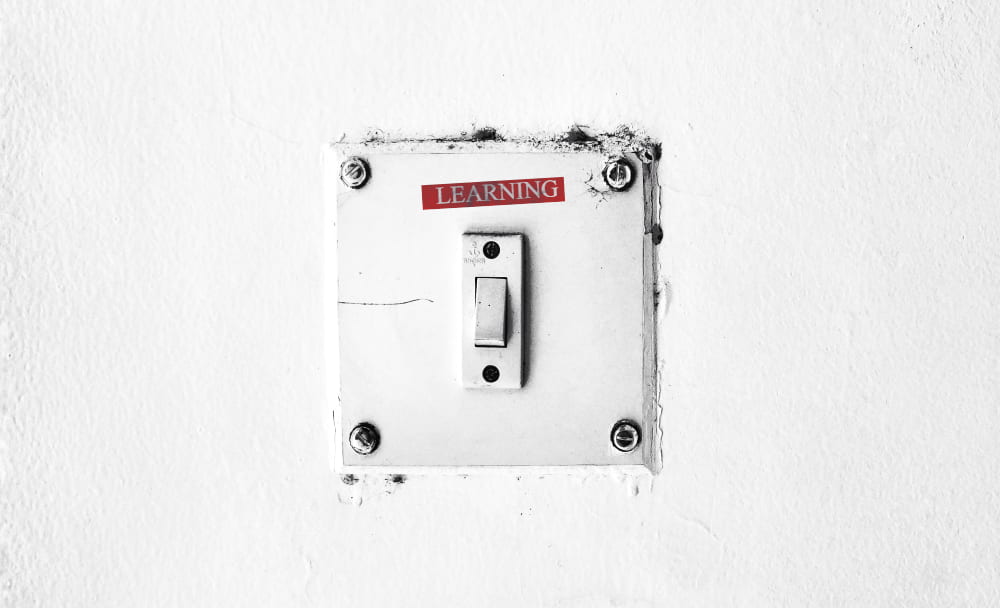
These Essentials are a way of being and a way of doing. Each Essential is a way of action. They sound simple and may intuitively make sense to you. Or they may feel quite foreign to what you are used to thinking and believing. Adopting them and using them takes intention, attention, and the desire to learn on your part. And by engaging with these practices, you will begin waking up your brain to its enormous potency to be healthy and creative, and you will learn to feel better in the midst of a “storm” of uncertainty.
ABOUT THE AUTHOR
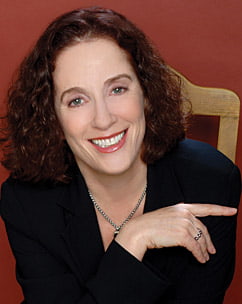
Anat Baniel is the best-selling author of Move into Life and the highly acclaimed Kids Beyond Limits, and founder of Anat Baniel Method® NeuroMovement® (ABMNM®) - a holistic approach to understanding learning, function, and acquisition of skills. Her work evolved from a background in dance, clinical psychology, and statistics, and from her close professional collaboration with Dr. Moshé Feldenkrais for over a decade. Anat and her team of expert practitioners work with high performers such as musicians and dancers, people suffering from pain or limitations, stroke victims, and an ever-growing number of children with special needs, as well as their parents and caregivers/therapists. She also collaborates with leading neuroscientists, doctors, and educators including, Dr. Martha Herbert, Dr. Jill Bolte Taylor, Dr. Elizabeth Torres, and others.
Anat and her team offer in-person sessions at Anat Baniel Method Center in San Rafael, California, online private coaching, online courses for parents, therapists, and caregivers, as well as practitioner training programs. Anat developed the 9 Essentials of NeuroMovement® that offer practical, accessible methods, supported by neuroscience research, that take advantage of the brain’s ability to change through movement to overcome pain, and increase flexibility, strength, creativity, and vitality. You can learn more about the 9 Essentials and receive tools to powerfully wake up your brain to overcome pain and increase flexibility, strength, creativity, and vitality here.
Acceptance
© 2022 Fleur Chambers
After seven years of living with chronic pain and receiving a diagnosis with no medical cure, I began my journey to change the way I responded to pain. Over time, I learned to let go of resistance and instead, softened into the deeper lessons my pain was teaching me. I developed the Ten Pathways to help others safely meet their pain (physical, mental, emotional or spiritual), access its wisdom, and embrace all life.
Pathway Ten: Acceptance
Pain x resistance = suffering

Small moments of acceptance are enough to alter your inner and outer landscape.
If you’re like the thousands of people around the world who have explored this ten pathways framework with me, the word acceptance probably brings up all sorts of inner dialogue.
- If I accept my circumstances, how will I improve my life?
- If I accept my relationships, will people walk all over me or take me for granted?
- If I accept myself, what will motivate me to better myself and work towards everything I want and desire?
These questions highlight a commonly held fear in people of all ages and life stages; that acceptance (of yourself or your life) will lead to “resignation.” So many of us hold the belief (either consciously or subconsciously) that if we accept ourselves or our lives then we will stop trying. We will settle for an “average” existence; unsatisfying work, unrewarding relationships, and a life that feels ordinary.
Take a moment to imagine such a person, full of resignation (and even self-pity). Perhaps their shoulders are hunched over, and their eyes are fixated on the ground. Maybe they appear withdrawn, closed off to the world, or willing to let life happen to them. They carry with them the energy of defeat, even hopelessness. I once knew someone who became consumed by offshore sports betting, believing it was their ticket to a better life. But instead of bringing excitement, it deepened their sense of despair. With each wager, they seemed more withdrawn, more closed off to the world, as if the losses were not just financial but personal. With these visuals in mind, it’s no wonder people aren’t lining up for a ticket to the acceptance pathway.
Here’s a hard-won truth I’d like to share with you after years of living with (and resisting) chronic physical and emotional pain. True acceptance is the opposite of resignation, it’s actually empowering and energising. You may be wondering how it can feel so light and liberating. The answer is simple: acceptance involves letting go of the heavy weight that is resistance.
The weight of resistance
When we resist ourselves and our lives it’s like wearing a 20kg backpack all day, every day. Except, in this case, this metaphorical backpack is filled with our thoughts. You know the ones:
I can’t believe they said/did that. I wish that didn’t happen. It’s so unfair. Why me? I need to be more kind/thoughtful/patient. I’m not successful/interesting/beautiful/fit enough. I need more love/money/recognition in my life.
Our resistance backpacks are filled with heavy emotions too:
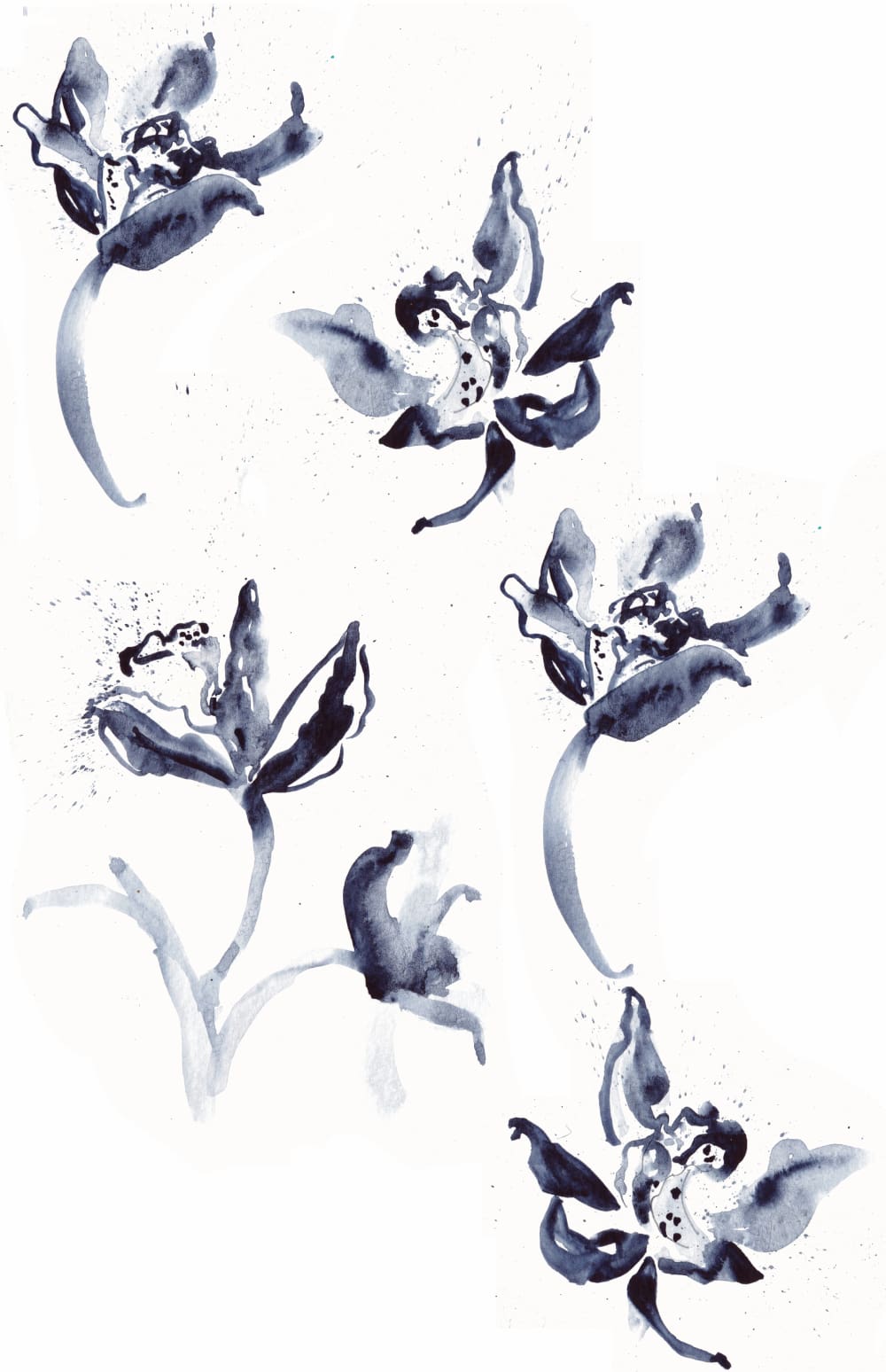
Remorse Shame Guilt Anger Jealously Envy
They can also hold energies:
Regretting Ruminating Wanting Striving Yearning
Carrying around these heavy thoughts, emotions, and habit energies impacts our bodies, minds, and hearts. It can also affect our personal identities and the way we interact with others and our lives. With people I’ve taken through the ten pathways framework, I’ve seen resistance show up in different ways. It can:
- Cause physical stress in our bodies including tension, tightness, and pain.
- Alter our posture so that our chest (and heart) become closed off and we can’t access states like compassion, gratitude, kindness, or forgiveness.
- Promote repetitive thinking that narrows our perspective and ability to creatively problem-solve and seek out new opportunities.
- Encourage us to avoid our emotions.
- Lead to long-term feelings of self-doubt, insecurity, and low self-worth.
- Encourage habits like perfectionism, people-pleasing, and procrastination.
- Result in us trying to control and micromanage the small details of our lives and our relationships.
- Reduce our capacity to find meaning in, and learn from, our pain, challenges, and setbacks.
Becoming familiar with your own unique habits of resistance (the way you frequently regret the past, worry about the future, or tell yourself that you need to be more) is the first step on the pathway of acceptance. You can begin this line of enquiry by asking yourself these three questions:
- What thoughts, emotions or energies am I carrying right now?
- Where in my body do I feel their weight?
- What happens to my perspective or outlook when I carry these burdens?
The second step is to see acceptance as a fluid and dynamic experience rather than a permanent or concrete state.
Exercise: A Break From Your Backpack
Imagine now that you are wearing a backpack. Notice how heavy it feels on your body. Notice also how it makes your shoulders slouch and your chest close off. With this heavy weight, your eyes become fixated on the ground, and you cannot see the wider environment.
Take a deep breath. Open to the possibility that this is what resistance does. It creates tension in your physical and emotional body and narrows your perspective. Now imagine that you are taking off the heavy backpack. Notice (or imagine) your body feeling lighter and more open. Pay attention to how, without the heavy backpack, your posture straightens, and your chest opens. It’s possible to look up and notice your surroundings.
This is the energy of acceptance.
Take a deep breath into any lightness or freedom that is here for you.
Repeat silently in your mind:
It feels good to let go of the weight that is resistance.
I’m safe to accept myself and my life, one moment at a time.
Acceptance comes in waves
Unless you are a Buddhist monk living in a monastery, chances are, acceptance isn’t a state you’ll be able to cultivate on a permanent basis (and that’s okay!). As we move into the final pathway and chapter of this book, I hope you’re already beginning to feel a shift in your life. However, I also know that, despite amazing progress, this is when our inner critic and perfectionist can start to creep in as we ask ourselves: But why do I still have moments where I feel resistant? Why am I not walking around in a constant state of Zenfulness?
In our fast-paced, productivity-driven world, it’s natural to have moments of resistance as you move through your days. Feeling overwhelmed by your inbox, frustrated by a delayed train, or disappointed that your kids didn’t eat their dinner are all natural responses to everyday life.
Redefining happiness isn’t about accepting everything all the time. Nor will it protect you from ever experiencing hurt, disappointment, or regret. I hope that ten chapters into this book, you’ve realised that true happiness isn’t about living in a constant, idealistic nirvana.
It is more about learning to pause every now and then and to notice what you are resisting. As we’ve discussed many times throughout this book, awareness creates space, and ultimately, freedom. Through this radical act of noticing, we are more able to let the resistance go (even if only for a short moment) and invite acceptance to fill its place.
When we acknowledge that the energies of resistance and acceptance flow in waves (and that we have the power to invite them in or let them go), we are more able to understand and forgive ourselves when life feels wobbly. Sometimes, despite our best intentions, it feels like we are taking one step forward and two steps back. For example:
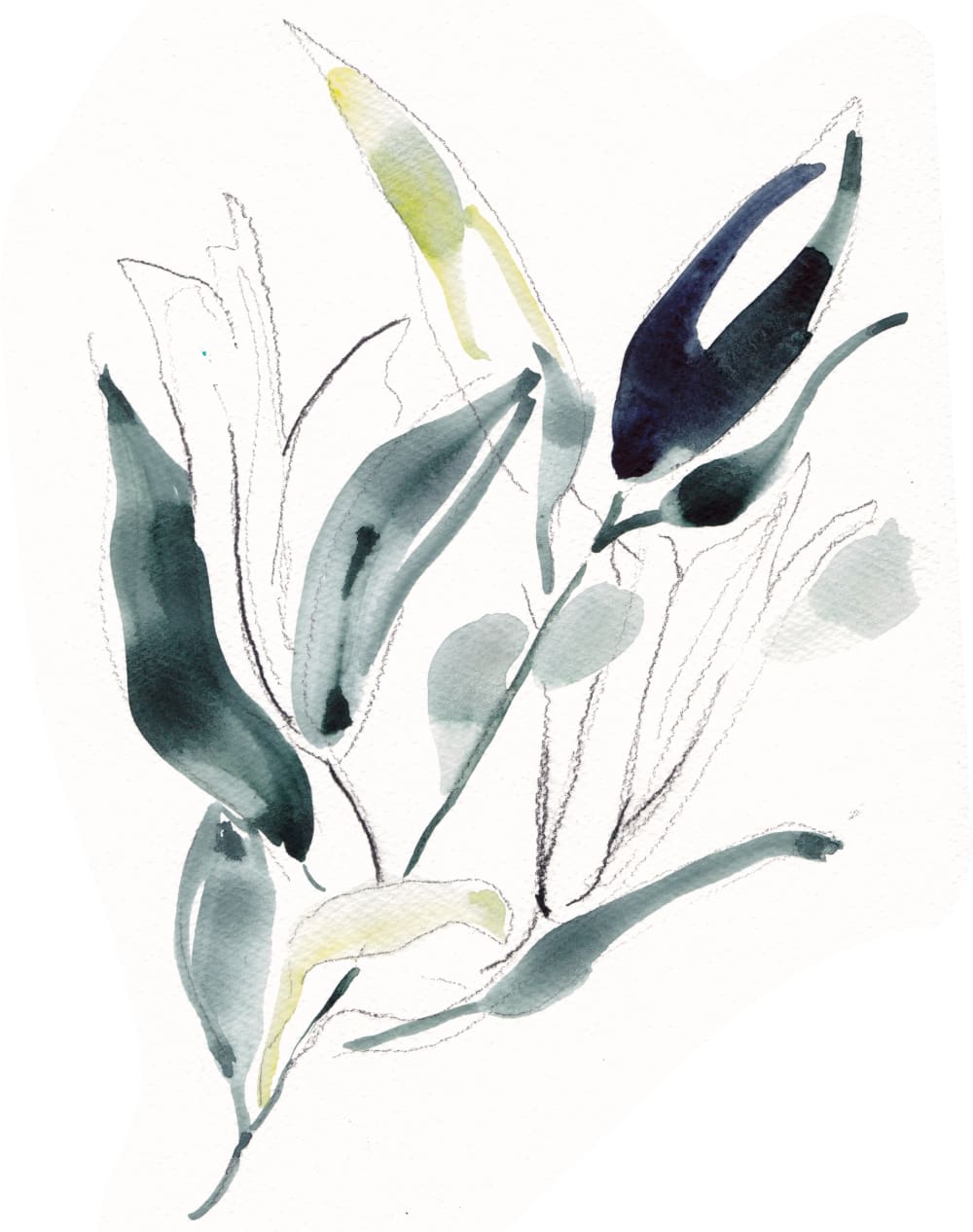
- The newly separated person who enjoys a few weeks feeling positive about their future and then wakes one day furious with their ex-partner and wishing they had never met.
- The middle-aged person who, in good grace, takes on the role of caring for their elderly parents, but every now and then feels frustrated and resentful.
- The new parents who love and enjoy their young children but sometimes fantasise about undisturbed sleep, freedom, and life before kids.
- The younger person who experiences greater confidence after getting fit, eating well, and meditating regularly and then suddenly has a period of anxiety and low self-esteem.
Personal growth (and life) is not linear — twists and turns are a natural part of being human. When we strengthen our capacity to create moments of acceptance within the messiness, to feel our scars with a warm-hearted presence, life feels easier and more enjoyable.
Exercise: lighten your load
Grab a pen and paper. Find a comfortable place to sit. Take three deep breaths. Think of something in your life that you are resisting. Choose something small or medium, like a conversation where you said something you now regret or a disappointment that you’ve been holding on to. Follow this six-step process to lighten your load.
- Describe this situation in a few sentences: ‘Right now, I know that I am resisting …’
- Write down all the thoughts you are having about this situation that feel like resistance. Hint: they might begin with phrases like: ‘I wish I didn’t …’, or ‘I can’t believe …’
- Write down the emotions that surface when you are caught in these thoughts and the energy of resistance. For example: guilt, shame, resentment, embarrassment, regret, resentment, anger, rage.
- Cast your eye over what you have written. Notice the weight of these thoughts and emotions.
- Remember the exercise we did earlier in this chapter when we imagined taking off our metaphorical backpacks? Visualise it now.
- Now take some time to write about this situation from a more accepting position. What thoughts would you have? What emotions would you experience? How would you feel about yourself and your life?
Well done, you just cultivated a moment of acceptance!
You can’t teach self-acceptance
As we take the final steps on our tenth pathway towards a more real and sustainable version of happiness, we are offered the greatest challenge of all: learning to accept ourselves just as we are.
As a meditation teacher who specialises in helping people cultivate more open and friendly relations with themselves, I know that it’s not possible to ‘teach’ someone to accept themselves. But people certainly try! Social media is filled with quotes like ‘you deserve your own love’ and ‘embrace your imperfections’.
I imagine that most of these statements are met with scepticism, as no-one likes to be ‘told’ to accept themselves. The practice of feeling comfortable in one’s own skin must originate from within (a cliché but so accurate).
So, I’ll save you the pep talk that you are perfectly imperfect. I won’t try to convince you that self-acceptance acts like a magic wand, dissolving all your insecurities, inner judgements, and fear. Instead, I’ll remind you of four practices you’ve already explored throughout this book that may help you move closer towards your own unique expression of self-acceptance.
Awareness
You can pause anywhere, anytime and notice your thoughts. Are you replaying or regretting something you said or did? Are you worrying that you aren’t good enough or that you need to be more? You can circuit-break these thoughts by engaging your senses and reminding yourself that you are safe. From here, you can ask these thoughts: Are you kind, do you help me be the person I long to be?
Compassion
Pay attention to the way you speak to yourself. Remember that harsh words create stress in our bodies and close off our hearts. Learn to identify the habits and patterns of your inner critic. Commit to responding to this inner aspect with a voice that feels more supportive, your Inner Ally.
Perspective
When you feel like you aren’t enough and people won’t accept you, when you notice yourself getting caught in habits of people-pleasing and perfectionism, pause and breathe deeply. Notice if you are being overly hard on yourself, and as best you can, offer yourself understanding and forgiveness. Identify those self-imposed high expectations and if possible, soften them. Become aware of when you are taking things personally and open to seeing things from a broader and more balanced perspective.

Connection
When you are being hard on yourself or feeling insecure, spend time outside. Notice the perfect timing of nature: the ebb and flow, the creation and destruction. Open to the truth that life is always changing and that nothing lasts forever. Allow this recognition of impermanence to remind you that you won’t always feel this way.
You already know how to pause and notice the ways you are resisting yourself. You have practiced how to offer yourself supporting phrases when your inner critic becomes loud. You know how to ask yourself different questions that will create a more friendly dynamic within you.
Remember also that self-acceptance doesn’t need to be a permanent state and it’s enough to cultivate small moments of inner friendliness. Over time, these moments will bring you into the landscape of your heart, the place where you can dare to imagine: What would my life look and feel like if I accepted myself exactly as I am?
My pain, my companion
As I write this, I’ve lived with chronic pain for seven years. I’ve raised my children through chronic pain. I’ve built a successful meditation app through chronic pain. I’ve written this book through chronic pain. I’ve also helped thousands of other people deal with their chronic pain, both emotional and physical. People often ask me:
When did you decide to accept your chronic pain diagnosis (and the possibility that physical pain may be a permanent feature of your life)?
The short answer is, I didn’t decide. It just happened slowly over time.
During the first few months after my formal fibromyalgia diagnosis, all I could think of was the doctor’s words: ‘There is no pill you can take for this condition. There is also no cure. All you can do is change the way you respond to the pain.’ During this time, I practiced all the strategies we’ve discussed in this chapter to find even a tiny drop of acceptance. I knew deep in my heart that resisting my diagnosis was hurting me more than the physical pain itself.
Over those lonely months, I became an expert at noticing when I was resisting my pain and when my metaphorical backpack felt the heaviest. I became curious about the type of thoughts and emotions I experienced when I was caught in the energy of resistance. Thoughts like: It’s not fair, and, I don’t know how much more I can handle. Emotions like anger, disappointment, and loneliness.
I observed how the resistance felt in my body and what it did to my outlook on life. I offered myself kindness and compassion. I stayed present to my entire experience without judgement. I didn’t push anything away.
From here, I was able to cultivate small moments of acceptance both for the way I was feeling in that moment and for the bigger picture of my chronic pain condition. I trusted in the healing power of these tiny islands of safety and ease. Over time, I could feel a dual sense of softening and opening within me. The pain was still there but I was no longer at war with it.
When I noticed the inner shift from resistance to acceptance, I encouraged the moment to land by closing my eyes and imagining the horizon line. I pictured the exact point where the land meets the sky. I imaged this horizon line travelling as far as my eye could see in both directions. I took a deep breath into this sense of expansiveness. I allowed it to soften my body, warm my heart and broaden my perspective. From here, it felt possible to understand my pain in a totally new way.
- I realised, without a doubt, that I get to choose what meaning I assign to my pain. From that moment on, I chose to understand my pain in this empowering way:
- Physical pain is my body’s way of communicating with me.
- When I experience pain it’s my body telling me that I have lost my way, that I have strayed from what really matters.
- Fibromyalgia is my body’s way of guiding me home.
So now, each time I experience a pain episode, I take a few deep breaths and ask my pain: What are you here to teach me? What would you have me know?
Over the years my pain has had a lot to say. Here are some of my favourite pieces of wisdom:
- It’s okay to be vulnerable.
- You are tired, stop pushing yourself so hard.
- Take an afternoon nap!
- Listen to your heart, it told you to stop eating meat!
- Stop worrying about what other people think of you.
- You are safe to make mistakes.
It’s amazing to think that these small moments of acceptance were enough to totally transform my relationship with my chronic pain (and my world view). May this be a reminder to you that whatever pain is here for you, however trapped, disempowered, or afraid you feel, the small moments do add up. I hope you’ll have the courage and the commitment to weave small islands of acceptance into your daily life.
My experience of allowing pain to alter my world view and pave the way for greater happiness is not unique. In my work I often hear from people who are allowing their challenges to open their eyes to a totally new way of living. Grief, job loss, separation, sickness, and even anxiety have put under the microscope what really matters and encouraged people to live differently.
In psychology, the idea that people who endure adversity can often experience positive growth afterwards is called post-traumatic growth. This theory was developed by psychologists Dr. Richard Tedeschi and Dr. Lawrence Calhoun in the mid-1990s. Their research highlights that after adversity, people can develop new understandings of themselves, the world they live in, and how they want to live and relate to other people.
Sarah Wilson, in her book First, We Make the Beast Beautiful describes this possibility powerfully when stating, “The more we are shaken, the more our former selves and assumptions are blown apart, the fresher the growth.”
Your challenges don’t need to be extraordinary in order to produce a shift within you. You can use your everyday stumbling blocks as opportunities to expand your world view. So how can you experience this shift? You can begin as I did, by befriending the horizon line.
Exercise: the horizon line
Gaze at the illustration of the horizon line. Enjoy a few deep breaths as you take in the small details. Notice how it makes you feel.
Close your eyes and continue to imagine a horizon line (either this one or one of your own).
Trust that as you focus on this horizon line, your body will naturally relax, and your perspective will expand.
Soften the space above your eyes. Allow your shoulders to drop. Relax your belly.
Bring to mind a challenge you are facing at the moment (something you would like to feel more accepting of).
Offer this situation or circumstance a few deep breaths, almost as if you are breathing the horizon line deep into your body.
Breathe in acceptance.
Breathe out acceptance.
Ask this challenge: What are you here to teach me? What would you have me know? Listen. Trust.
Remember, you get to choose what meaning you assign to your challenges and your pain.
May you have the courage to find a meaning that moves you closer to inner happiness.
(Gratitude to Phillip Loft for teaching me how to connect to the horizon.)
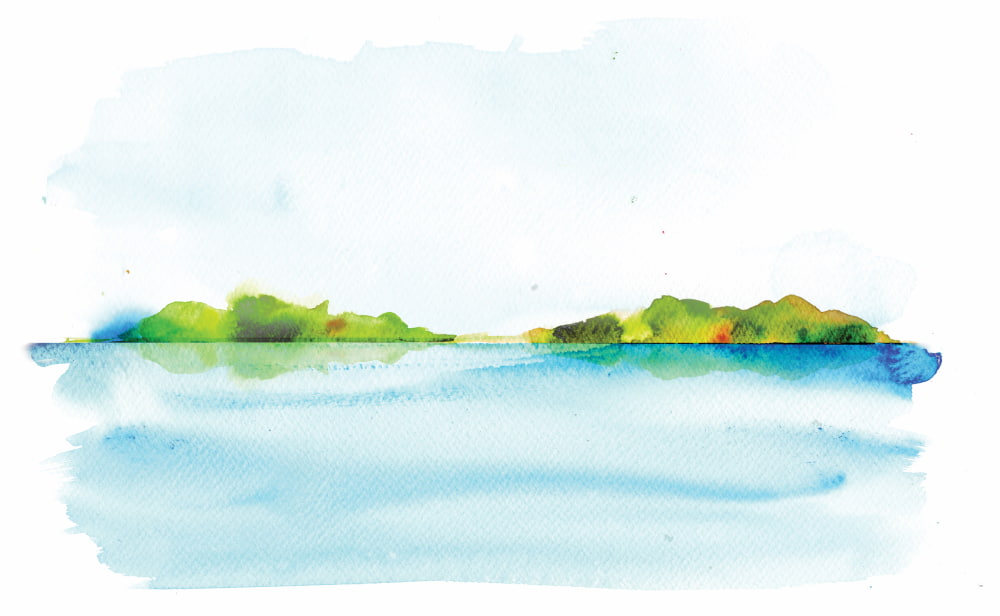
Self-acceptance in action
Much like our ‘I’ll be happy/confident when …’ stories, our ‘I’ll accept myself when …’ narratives are often based on a feeling of lack or scarcity. They carry with them the belief that right here, right now, I am not enough, I need to be more (patient, kind, interesting, motivated, driven, healthy etc.).
When our actions stem from this place of not enoughness, we end up doing things for the wrong reasons. Desperate to be accepted (by others and ourselves), we get swept into the tide of perfectionism, people-pleasing, or procrastination. We become stressed, burnt-out, or resentful. We make decisions that aren’t aligned with our values and who we want to be.
For example:
- The parent who feels unsure of themselves so agrees to join the school committee (even though they are already over-scheduled) in the hope that they will be accepted by this community. Instead of feeling included, they end up feeling stressed and resentful of this new responsibility, tired, and spread too thin.
- The younger person who wants to get fit and healthy but feels like they ‘should’ go out drinking and dancing with their friends in order to be accepted. They wake the next day feeling tired and disappointed in themselves.
- The staff member who worries they aren’t qualified enough so works until late at night to ensure their part of the work project is perfect. When they receive positive feedback on their contribution, they don’t feel satisfied as the feeling of not being enough is still there under the surface.
- The person who has an idea for a small business but is worried people will think it’s silly or that they aren’t qualified or experienced enough. Consumed by what others will think of them, this person gets caught in cycles of procrastination and never makes their dream a reality.
In contrast, when our actions come from a deep belief that we are already enough, we make better decisions. We learn to act in ways that are sustainable and more representative of our values and goals.
For example:
- The parent who is asked to join the school committee but declines as they know this increased responsibility will put pressure on their family and detract from time with their kids.
- The younger person on a health quest who declines a big night out with their friends and wakes in the morning feeling fresh and proud of themselves for honoring what’s important to them.
- The staff member who notices when they are caught in cycles of perfectionism and people-pleasing and offers themselves a supportive phrase like, ‘You’ve done enough, it’s time to switch off from work.’
- The person keen to start their own small business who notices the fear of being judged but stands strong, willing to chase their dreams, even if it feels uncomfortable.
Each day we make big and small decisions. Learning to take a moment to pause and ensure that your actions are tethered to an inner belief that ‘you are enough’ is an important aspect of redefining happiness. So how can you do this on a day-to-day basis?
In the perspective pathway, we practiced moving from fear to love by learning to connect with our inner compass. We can use this inner compass here too — allowing it to guide us away from insecurity and self-doubt towards enoughness. Or if you prefer: away from scarcity towards abundance, or from self-resistance to self-acceptance. This practice includes pausing before we make decisions, inviting in a moment of self-acceptance, and then acting from this more whole and authentic place. When we do this, we connect with our natural wellspring of inner motivation and drive.
Exercise: your Inner Compass (part two)
Try this practice when you need to make a decision.
Begin by taking three deep breaths. Bring a question or situation to mind, something you would like guidance on.
Acknowledge how you are feeling in relation to this question or situation. Notice any subtle expressions of insecurity or resistance. Notice how this feels in your body, maybe like a heaviness or an ache.
As best you can, allow whatever is here to be as it is. You don’t need to push it away. But also, you don’t need to get pulled in. Just breathe.
Invite in a moment of self-acceptance. Repeat silently in your mind: Right here, right now, I am enough. I accept myself exactly as I am.
Allow this energy of acceptance to relax your body, to soften you. Imagine you are holding a compass that has two directions, resistance/insecurity and self-acceptance.
In your own time, move the compass so that it points you in the direction of self-acceptance.
Ask yourself these two questions: If I believed in myself, how would I move forward? If I trusted that I was already enough, what is the first action I would take?
Really imagine yourself thinking, feeling, and acting in this way.
Take a deep breath. Smile. You just learnt to calibrate your actions towards greater authenticity and happiness.
Remember, you don’t need to do this exercise sitting down with your eyes closed, you can do it anywhere, anytime you need to make a decision that’s grounded in self-acceptance.
Walking towards acceptance (and happiness) will be different for each of us — and that’s how it should be. I want you to realise, as you arrive at the end of this book, that you can make your own rules and find your own meaning. You can create a life you’re incredibly proud of, in spite of (or because of) the challenges you have faced. It all begins with acceptance, even if just for a moment at a time.
Exercise: dare to imagine
Take a few deep breaths into your chest (or your heart).
Focus on how your chest expands in all directions: front, side, and back expanding on each inhale.
Imagine that with each breath you are waking your heart.
Notice any feelings of warmth or ease.
Ask yourself one or both of these questions: What would my life look and feel like if I accepted myself exactly as I am? How would I feel if I accepted my life just as it is, right here, right now?
You don’t need to have an answer, it’s enough just to stay with the question.
Rest in this space of imagination, freedom, and possibility for at least five breaths.
Notice any changes in your physical body (relaxation, softening, lightness).
Notice any changes in your heart (emotions, perspective, outlook).
Ask yourself: What would I do more of? What would I let go?
Breathe deep into this moment of possibility. Trust that it is altering your inner landscape and creating space for greater acceptance and freedom in your future.
ABOUT THE AUTHOR
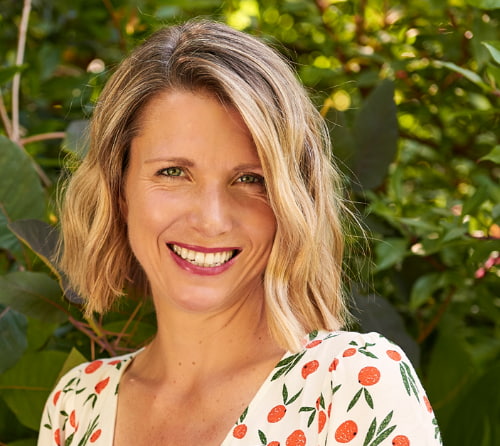
Fleur Chambers is a multi-award-winning meditation teacher, Creator of The Happy Habit app, author of Ten Pathways and philanthropist. Using her experience of living with chronic pain, Fleur is helping others to see that happiness isn’t an imaginary place free of disappointment, regret, insecurity or any other uncomfortable emotion. In contrast, real happiness is the ability to live wholeheartedly alongside our challenges and to learn from them.
With proceeds from The Happy Habit funding grassroots projects in some of the poorest communities around the world, Fleur is using meditation as a tool for social change. She believes that we meditate not only to alleviate our own suffering, but also to improve the lives of people all around the world.
Keen to strengthen your capacity to be with your challenges whilst also contributing to the world? Download The Happy Habit app or find out more about Fleur’s book Ten Pathways.
ABOUT THE ILLUSTRATOR

Sarah Hankinson is a freelance illustrator with a love for capturing the beauty of everyday moments with watercolour. She attended Fleur’s mindfulness course when her children were small and collaborating on this book has been a celebration of their shared love of nature, presence and joy.
https://www.sarahhankinsonillustration.com/.
Bodhi Dogma: The Beauty of Bearing Witness
© 2022 Christine Moran
I am a dog lover. It seems that the older, and hopefully wiser I get, the more I am in awe of these furry teachers and healers. Dogs are true Zen masters - no narrative about what they may be doing at any given moment. Playing, eating, sleeping is simply playing, eating, sleeping. Joyfully living in the moment, and giving us unconditional love. Dogs brought me to meditation. Long before I became a daily meditator, or took the Buddhist precepts, I remember watching my two dogs (Ava and Hayden) play and I would just sit and watch. It was such a break from all of my worries, anxieties, and a list of things I had to get done. There was no narrative, just presence, and sheer joy. Little did I know 17 years ago that dogs would play into a deep spiritual teaching for me, a profound and powerful state of being that I now call Bearing Witness. A state of being that I realize I have had countless experiences with, but have never named or given it the respect it deserves.
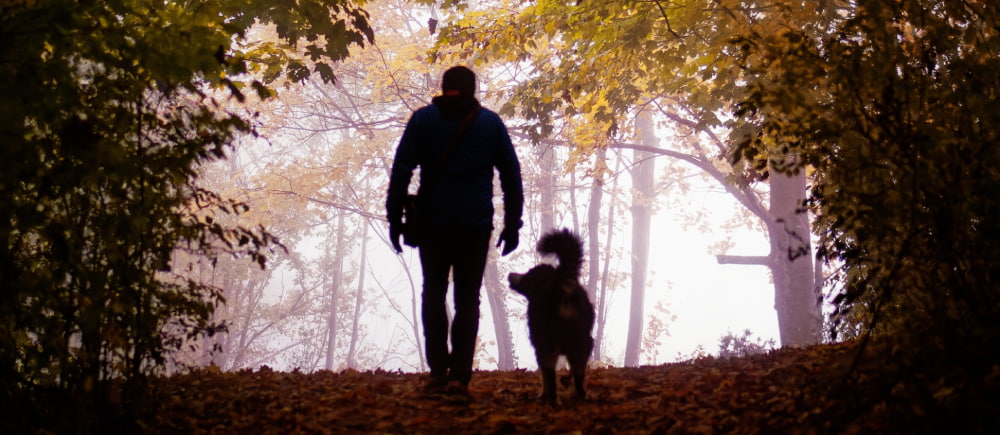
In the second week of January of this year I was out for my daily bike ride with my two dogs, Bear and Gracie. We live rural and even though the road we go down has become busier it is still such a gift. We often see bald eagles, the occasional owl, and a lot of sheep (which does bring to mind the time I rescued a wandering sheep but I digress!) This particular day we were riding back home when my distant neighbor's 8-month-old puppy, named Cali, ran out and got hit by a truck right in front of us. I saw her slide across the road as if in slow motion. I dropped my bike and ran to her. I tried to pick her up but could not, so I just held her in my arms sobbing and saying how sorry I was. Just like that she was gone.
The owners of the puppy came out and seeing the look on the 14-year-old boy who owned the pup was so heart wrenching. There are no words to describe that look. I biked the two miles home, sobbing. When I arrived home, the first thought I had was I needed support. I called my husband who was at work, then texted three of my dog loving co-workers. Even though nothing anyone could say would change what had happened, it was comforting to feel their love and receive support.

The very next morning, after a tearful meditation with ruminating thoughts about this horrific incident, I was on my way to work when I saw a car stopped at the end of my street. It was early morning, dark and rainy. I pulled up and saw a young man holding the collar of a yellow lab. I stopped and asked if he found a wanderer. “Oh yeah, I almost hit him.” My heart took a little leap. I noticed that the man was standing in the cold wet street with only socks on. My mind immediately started crafting the narrative of this shoeless, soggy wet man who almost hit another dog.
He pointed to a rundown property with a half burnt down house that now has several trailers on the property, and my judgy mind had made up stories about the no gooders who live there. He tried calling the number on the dog tag with no luck. He then proceeded to tell me he works nights and was on his way home. He had seen a homeless person with no shoes, so he gave him his brand new 100-dollar work boots. He wanted to “pay it forward.” I now know his name is Tim, and I tell him to call the sheriff. He did, and then asked if I would help load the wet, cold, shivering dog into the front seat of his car. I do and witness how gentle Tim is, and how he adjusts the vent to blow warm air on the dog, and then how he takes his coat and starts wiping the dog off. He told me he was going to keep the dog in the car with him until the sheriff came and hopefully reunited the dog and owner.
I drove off to work sobbing and laughing at the same time. A twelve-hour window of witnessing a terrible incident followed by a beautiful tender one, and watching what my mind was doing with all of this intense sensory input.
Witnessing Cali getting hit made me feel so groundless as if time had stopped. I am a Registered Nurse so it is in my nature to intervene when witnessing suffering. While standing in the middle of the road unable to do anything but be totally present and hold her in my arms trying to provide comfort I realize in retrospect that I was there with her completely. The narrative in my mind did not start until later. The “if only”- if only had been a minute later or earlier. If only I had gone a different way. Why did this have to happen? Why was the puppy out anyway? Who is to blame for this? I sat with this the next morning. It initially felt like a solid mass in my chest. I did not want to feel this or have the image of her getting hit in my mind. However, sit with it I did.

Even though tears were running down my cheeks and it was so difficult to stay with my breath, I went right to the area that felt so heavy and solid. I realized that the constricted area was not solid. There were other sensations there as well. Compassion and love for this sentient being. Compassion and sorrow for the family who lost their pet. Compassion, grief, love for myself who was experiencing this. The realization that my narrative about the situation, the energy that was making up stories, blaming myself, was only prolonging my suffering. Like a wheel going round and round it was keeping me in a loop. Sitting, staying, healing. Allowing it to move around and through. Leaning into it rather than away from it, which goes against our intuition and conditioning.
Bearing witness to uplifting, beautiful experiences is so much easier than the raw, sometimes horrible situations we may find ourselves facing. Real growth does come from the gritty, hard, heart wrenching things life may throw at us, if we allow it to. So many of us don’t want to face, can’t face, the tragedies that we all experience in one way or another. We say “I couldn’t bear it”, and push it away, push it down. No wonder so many suffer from anxiety, depression, fatigue because when we suppress nothing goes away. It weighs us down and keeps us living behind a veil. When we don’t acknowledge that we as humans are given plenty of opportunity to bear witness, when we don’t allow it to cause our hearts to break wide open, we miss out on the gift of alchemy. This can be described as transformation, inner liberation, and change. We miss the opportunity to see the other as ourselves, our shared humanness and interconnectedness. We cannot experience this when we are constantly running our own inner narrative.
To help facilitate our growth and maintain balance we also must take in the good. It would be unwise to think that in order to live authentically we must only bear witness to the suffering, as if this will somehow facilitate us to an enlightened way of being. Dr. Rick Hanson says that good experiences are like Teflon, our mind lets them slide right off. We witness so many marvels in our day-to-day existence and don’t acknowledge the magic that is all around us. I do not know if witnessing Tim and his heartwarming actions toward that cute little lab would have affected me so much if I had not experienced the trauma the evening prior. I feel that by dropping any narrative, and being entirely present for what was, allowed for the good experience to soak into every cell of my being. I could have stayed in the judgy mind, the trauma mind, my story mind, if only mind, and missed the marvel of human kindness, and the deep sense of connectedness.
Cali’s owner stopped me a few days after the incident. She told me that she felt so terrible that I had to witness the tragedy, but also glad that I was there for Cali’s last moments. To me that is so beautiful, so uplifting, the heart of bodhicitta, described in Buddhism as the mind that strives towards awakening, empathy, and compassion for the benefit of all sentient beings.
Naming any experience as bearing witness allows us to give any situation space to be. It allows for a shift from our mental chit chat that tends to be all over the place, to a stillness that reflects our true nature. We are not taught this as children. How many well-meaning parents divert a sad, upset child with food or a toy? When someone else is uncomfortable, we get uncomfortable and thus try to make the source of discomfort go away. Witnessing another's sadness, grief, pain makes us feel awkward and immediately we start giving advice, making it about us, trying to fix it, or doing something. How many times are we thinking about what our response is going to be? Or the well-used “should patrol'' as in ‘“you should, he should, she should.” How often can we or do we just stay and be present?
I recall a terrible experience that involved another dog, and my limited capacity for dealing with it.

9 years ago I came across another dog that had been hit. It was dark and it took a few moments to identify that it was a dog laying in the road, badly injured but alive. Whoever had hit the poor thing had not stopped. Shortly after my arrival a young couple came upon us and after looking at the injuries stated that they lived a mile up the road and that they would go and get their gun. I stayed and I remember oscillating between the feelings of utter presence, helplessness, and utter rage. The only thing I could do was to stay and talk softly, trying to at least be soothing. The owner did come and when the young couple came back the owner stated that his dog was too injured and that shooting it was needed to put it out of its misery. I asked them to wait until I had driven off, and I did with the music cranked up and tears flowing.
Once I got home I had a rather large glass of wine and cried and drank. I did not meditate regularly then, and I just tried to put it out of my mind. I could not drive down that road for many months. I felt so much anger at the person who hit it and did not stop, so much grief. And so much self-doubt, asking if I could have done more? Should I have tried to take it to the emergency vet? Should I have at least tried to pet it? “Should” is of no benefit to anyone. I did not sit with this pain; I ran from it. It was a pokey sharp edge and there was no way I was going to go along and feel the pain and discomfort of it. I ran narratives in my mind, I distracted myself, anything but to feel that utter despair. It still haunts me to this day because I feel that when we run the trauma does not run away - it stays and gets stuck in our tissues and cells. Though this happened many years ago, I feel that I can bear witness to the incident, and bear witness to my suffering surrounding it. There is no statute of limitations to allow things to pass through and be healed.
I realize that bearing witness takes an incredible amount of inner grit, self-compassion, and patience. I also know that as humans we bear witness to things our eyes should never see, our ears should never hear, our hearts should never feel. Some events are so traumatic that staying present and bearing witness would be so overwhelming that no healing could take place without an incredible amount of support systems in place. Feelings, even the worst of the worst won’t kill us, but some of the things we do to get away from those feelings can.
I have been reading about Roshi Glassman leading a retreat at Auschwitz. I cannot imagine what it would feel like to be physically present at such a horrific place when just reading about it was so uncomfortable. The retreat participants stayed present, chanting the names of the deceased, and paid homage to the souls that were left behind. They were stronger than their fear, stronger than the need to run away. Dropping the usual way of reacting to our made up stories about things and the way they are allows for an opening and a profound presence-bearing witness.

In reflection of my 30 years of nursing I realize that in my role of caregiver to many, many people have in turn given me the blessed opportunity of bearing witness, even if I did not realize that is what I was doing. Even the best caregivers sometimes have an empty tool box. No medication, IV, oxygen is going to make the new cancer diagnosis go away, or bring the stillborn baby back to life. I have cried with and for people, have held a hand because nothing more could be done.
When faced with these challenges I find that mentally saying “bearing witness” brings me to that place of dropping any of my defenses, opening to an unknowing mind and bearing witness to what is unfolding in its own way. Sitting, staying, healing.
Naming the state of being as bearing witness allows us to drop into presence and realize our humanness and shared humanity. We witness the joys and sorrows that are part of this tapestry called life. In this presence we can develop compassion, steadiness of mind, and a deep inner strength. We think we cannot bear something, yet we do, and the world in our once limited view opens and changes. We can release our judgments, the conviction that we know something when in fact we do not (as I had judged Tim because of his living conditions). We can be the healer, and the healed.
I give thanks to my many teachers along the way, especially my canine gurus. May we all be given the honor to bear witness and change ourselves and our view of the world. It is not an easy task, and there is no such thing as a one-time fix. It is an ongoing process as long as we are alive, again and again. Allowing for this can be so painful, and raw. The alternative, however, is to stay limited in our suffering, to be closed off, living behind that veil. Bearing witness to things just as they are can propel us into the absolute juiciness of life, the magnificence of having a human experience. When there is no story, life can live through us.
Sitting, staying, healing.
ABOUT THE AUTHOR

Christine (Chris) Moran is a wife and mother of two amazing children. She has been a registered Nurse for 30 years and has practiced in numerous areas of medicine. Originally from Ontario, Canada, she moved to the United States in 1992. After four years in Tucson, Arizona she moved to Oregon where she currently resides with her husband and two dogs. When she is not busy working in the Operating Room, she enjoys kayaking, snowshoeing, and daily bike rides with her dogs. She has competed in novice and intermediate levels of rally (dog sport) and attends weekly dog agility lessons. She has been a member of Blue Cliff Zen center since 2017, and has found Zen practice along with daily meditation to be deeply nourishing and life changing.
Skillful Means: Using RAIN
Your Skillful Means, sponsored by the Wellspring Institute, is designed to be a comprehensive resource for people interested in personal growth, overcoming inner obstacles, being helpful to others, and expanding consciousness. It includes instructions in everything from common psychological tools for dealing with negative self talk, to physical exercises for opening the body and clearing the mind, to meditation techniques for clarifying inner experience and connecting to deeper aspects of awareness, and much more.
Using RAIN

PURPOSE/EFFECTS
RAIN is a mindfulness practice that can be used with any content of mind, but is typically applied to unpleasant, uncomfortable, or upsetting material (the focus here). RAIN is an acronym that incorporates the core teachings of mindfulness, and instructs us to Recognize, Accept, Investigate, and Not-identify with difficult thoughts, feelings, desires, etc. (for simplicity, we’ll refer only to emotions here). Approaching painful emotions in this way can transform them into more workable, revealing experiences. Practicing RAIN can also prevent unhelpful responses, such as rumination or acting out.
METHOD
Summary
When difficult emotions arise, practice working with them by recognizing, accepting, investigating, and not identifying with whatever is present.
Long Version
Work with a difficult emotion when it arises by practicing these four steps of RAIN:
Recognize
- The first step to working with a difficult emotion is to recognize when it is present.
- Recognizing involves pausing and asking yourself, “What am I experiencing right now in my body, thoughts, emotions, and situation?”
- Recognizing prevents denial or avoidance because you are bringing what is unpleasant and perhaps unwholesome into your field of awareness so that it can be seen and dealt with.
- Brain imaging studies have demonstrated that recognizing and labeling emotions actually reduces activity in the emotionally reactive regions of our brain.
Accept
- The “A” in RAIN can stand for “accept,” “acknowledge,” and “allow.”
- Acceptance in this sense means to acknowledge what is present in this moment and to allow what is already here to be here.
- It is important to note that just because you accept or acknowledge something is present does not mean that you agree with or support it. You are simply acknowledging what is present right now.
- It is also important to be aware of any thoughts or emotions, such as resistance or aversion, that may arise when you recognize what you are experiencing.
- Notice any subtle or unconscious forms of resisting your emotions, such as trying to “accept” them so that they will go away. See if you can truly allow what is here to be here, and let the emotion(s) run its course and leave naturally.
- When practicing acceptance, it may be helpful to say to yourself phrases such as “Ah, this too,” or “allow,” or “let be.”
Investigate
- After working with recognizing and accepting what is present for you, begin to investigate your internal experience.
- It is crucial to bring an attitude of kindness, curiosity and compassion to your investigation.
- Investigate three primary facets of your internal experience:
- Physical sensations: Notice what sensations are present in your body, including their textures, layers, changing nature, and anything else that occurs.
- Emotions
- What is the basic feeling tone of your experience (positive, negative, neutral)?
- What emotions are present? (There may be many different emotions present at the same time.)
- Ask yourself, “What does this feeling want from me right now? What is it trying to tell me?”
- Thoughts
- Notice what thoughts are passing through your mind.
- Perhaps ask yourself, “What stories am I believing right now?”
Non-identification
- Non-identification means not believing that your emotions “belong” to you, or labeling them as “me” or “mine.”
- It involves not taking emotions personally, and understanding that “your” emotions are not really yours. The emotions you experience are also not unique to you, but instead are shared and experienced by all humans.
- It can be helpful to label the emotion you are experiencing as something that is present in this moment but not enduring.
EXAMPLE: Instead of saying, “I am an angry person,” you could reframe it more accurately by saying “Anger is present right now,” or “I am experiencing anger right now.”
Perspectives on Self-Care
Be careful with all self-help methods (including those presented in this Bulletin), which are no substitute for working with a licensed healthcare practitioner. People vary, and what works for someone else may not be a good fit for you. When you try something, start slowly and carefully, and stop immediately if it feels bad or makes things worse.
HISTORY
RAIN is a mindfulness practice that was first introduced by Michele McDonald over a decade ago. It is a common practice taught by many Western mindfulness teachers including Jack Kornfield and Tara Brach.
CAUTIONS
Opening to intense feelings can be difficult and painful. During the “accept” and “investigate” steps of RAIN, please go slowly and only participate to the degree that you feel comfortable. If you have experienced trauma in the past, or if the feelings you are experiencing are too intense, please discontinue the practice.
SEE ALSO
Emotional Awareness Meditation Transforming Anger Transforming Anxiety
EXTERNAL LINKS
Article by Tara Brach: Working with Difficulties: The Blessings of RAIN
Fare Well
May you and all beings be happy, loving, and wise.
The Wellspring Institute
For Neuroscience and Contemplative Wisdom
The Institute is a 501c3 non-profit corporation, and it publishes the Wise Brain Bulletin. The Wellspring Institute gathers, organizes, and freely offers information and methods – supported by brain science and the contemplative disciplines – for greater happiness, love, effectiveness, and wisdom. For more information about the Institute, please go to http://www.wisebrain.org/wellspring-institute.
If you enjoy receiving the Wise Brain Bulletin, please consider making a tax-deductible donation to the Wellspring Institute. Simply visit WiseBrain.org and click on the Donate button. We thank you.

